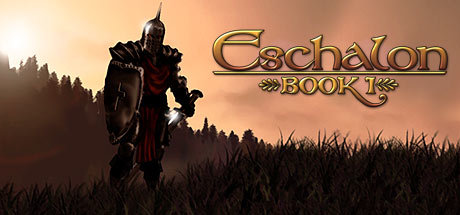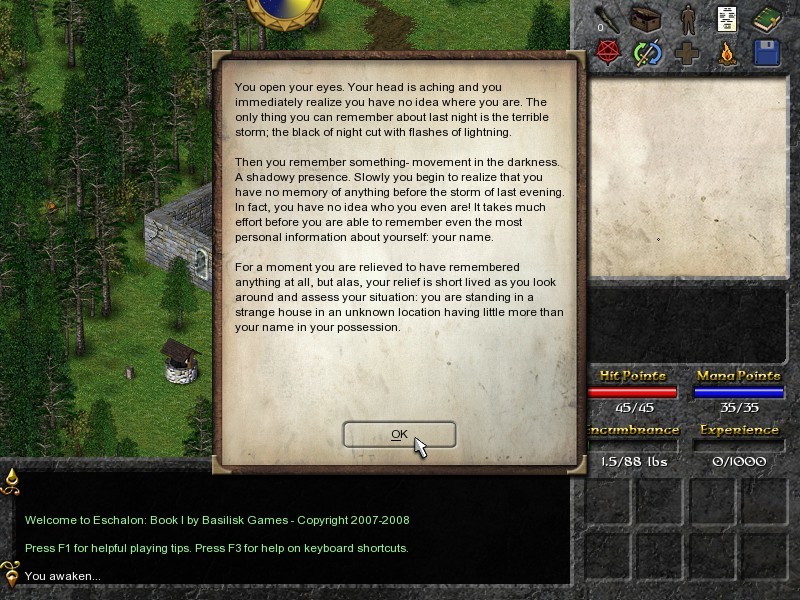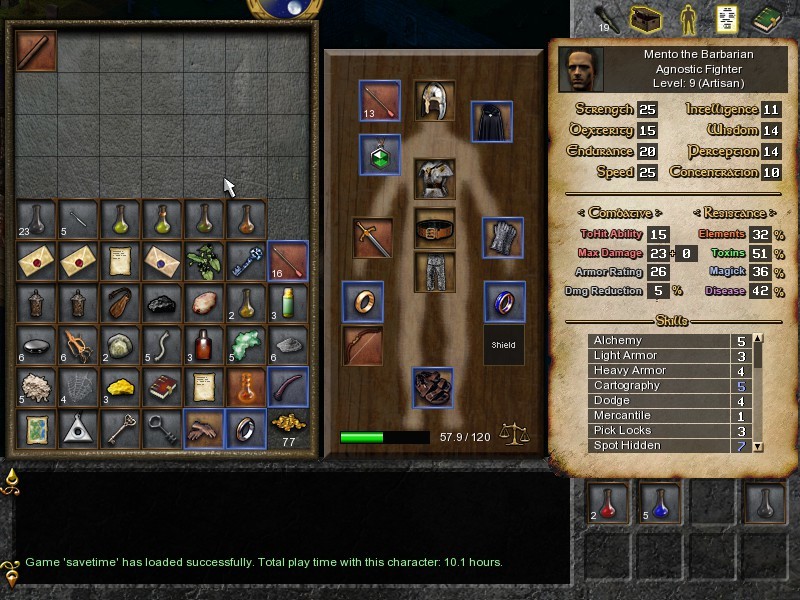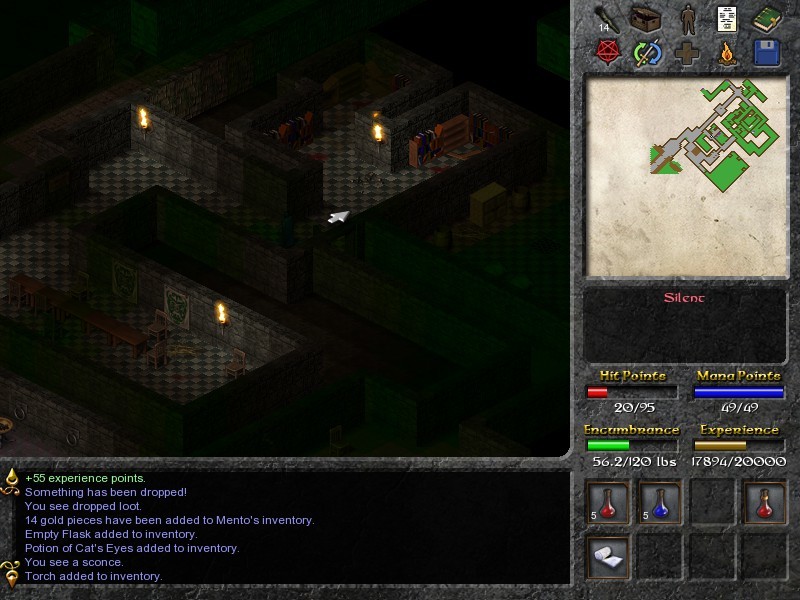Indie Game of the Week 66: Eschalon: Book I
By Mento 1 Comments

I've had a dilly of a pickle of late trying to hone in on what an "Indie" game is, beyond its nominal definition of a game created by independent means in lieu of a major publisher. I think one of the biggest difficulties in figuring how to codify Indies is that they've always been around in one form or another, as far back as computer gaming has existed. In ye olden times where I apparently hail from, we used to call these cheaper, truncated games from small development teams "shareware", due to the way they would promote themselves by giving out a sizable portion of their product for free and asking kindly for a nominal fee to unlock the rest. You also had freeware games too, of course, which tended to be early design projects too rough to be considered for commercial distribution. These days the latter have evolved to become what we think of Flash games, from sites like Kongegrate and Armor Games and Newgrounds et al, and the former as Indie games we buy from digital distribution stores at around $10-20 per pop, usually sans any sort of demo. The presence of this smaller tier has existed for so long and been sold through so many different channels that it might prove impossible to narrow down what an "Indie game" truly is, let alone a proper term for them that could expand to include smaller games that actually do come from major publishers like Grow Home (Ubisoft), Fe (EA) and Ori and the Blind Forest (Microsoft).
Eschalon: Book I, developed by Basilisk Games and released commercially in 2007, is one of the most senior Indie games on my IGotW shortlist. However, after playing it for a substantial amount of time, it feels considerably older: a traditional, top-down RPG that borrows variously from genre cornerstones like Ultima, Rogue, Diablo, Baldur's Gate and others with a handful of slightly more modern quality-of-life tweaks to make it palatable for a contemporary audience. In other words, the sort of game that I might've bought as shareware back in the 1990s. Basilisk is, in some way, following the example set by Spiderweb Software (they of Avernum, Geneforge and Avadon) in not only distributing their RPGs in bite-sized "chapters" as they're completed, but in pretending the Infinity Engine and Aurora Engine eras of CRPGs didn't happen, or at least didn't completely supplant the older formats that came before. However, I feel that's also a slightly reductive take: they aren't so much repurposing those archaic models for the sake of a nostalgic hit but improving on them, taking a distant ancestor of the modern CRPG and evolving them along a divergent route that focuses more on design ingenuity than state-of-the-art technology. I could also be reading too much into all this, and maybe Basilisk simply wanted to make a compelling and rich RPG experience within their limited means. Either way, I've been enjoying what Eschalon's been putting down, even if I have a few reservations I'll get into in a little while.

The (compulsory male, alas) hero wakes up in a ruined village without his memories or his true name, instead left with an imprinted alias (of the player's choosing) and a trail of breadcrumbs to follow from an enigmatic source. Eschalon Book I's plot is fairly paper-thin, but it makes up for it with a lot of world-building and some classic CRPG exploration. You're generally recommended to follow the beaten path - for one, there's a strict level-requirement to many of the game's regions and their foes, and it won't end well if you stray too far - but there's more than enough time for some scenic routes and side-questing. I feel like Book I, which is the first in a trilogy that was fortunately completed back in 2014, is built specifically to lay the groundwork and establish the eponymous world of Eschalon, its geography, the current fracas facing it, and its various factions such as the now-isolationist humans to the north, the goblins in the south, and the nebulous threat of the "Orakur", a subterranean race with whom humanity has had its occasional spat. The recent furor concerns a priceless and symbolic gem that the earliest human miners of the region discovered, named the Crux of Ages, and its supposed theft by the Orakur. The human armies have been refocused on the underground menace, allowing the overworld to be overrun by an unusually determined goblin horde, leaving many human frontier towns as abandoned, plundered ruins. The player wakes up in the midst of this battlefield, and is occasionally compelled to do what they can to deter the goblin threat en route to their own series of destinations to rediscover their origins. I don't imagine the game will get too much further than resolving the hero's personal quest for knowledge right now, and then later games will expand on his role in saving Eschalon once their identity has been determined.
A lot of Eschalon's mechanics are straightforward and pragmatic, but in a way that occasionally produces some dramatic battles and disparate but equally viable character builds. It's a single-character game, so while you can select a fixed class that gets you started on a build, the game also anticipates that you'll branch out a little to cover every base you might need, either on purpose or accidentally. It seems specialization is still key in this game - without a singular focused attack discipline to pour points into, whether that's swords or axes or bows or spells, you'll run into some serious trouble with the game's stronger foes - but I've learned that having a full suite of useful skills is also paying dividends. Each level lets you distribute points into stats - similar to D&D 3E, you only reap benefits from hitting certain milestones, in this case numbers divisible by 5 - and a separate pool of points to allocate into skills. However, you can either spend the three skill points earned per level on boosting three currently owned skills, or spend all of them at once to learn a single new skill. However, you can also learn new skills from trainers and skill books. What can happen, then, is that you shy away from acquiring new skills due to their expense but end up learning them incidentally instead, in the process learning that they have more application than you previously thought when you passed over them during character creation, and decide to pour more points into them from then on. Your character development then takes on various detours and changes to suit new developments and epiphanies, but is still to some extent beholden by the original parameters of your selected build. It's an elegant system that rewards experimentation and random developments while simultaneously allowing for a static specialized build that should prove workable for the tough end-game battles to come - in other words, it's a little less min-maxy than other RPG systems where you're either forced down a particular path or are obliged to keep feeding points into the handful of skills you started with.

An example of this is the cartography skill. Cartography does nothing but add more detail to the mini-map the more points you put into it. At level one, the auto-map will start gradually filling in contours of the environment, and without at least that first level the auto-map stays blank. At level five and beyond, you not only get colored dots for containers, but it also color-codes the contours and floor terrain, and starts filling in more of the surroundings from further away. Its actual utility is questionable, but it's a skill that can be upgraded almost entirely outside of levelling: a common magical item early on is a set of sandals that adds two points to the player's cartography skill, and one of the first NPC trainers the player meets is a forlorn sailor who's lost his sextant, recovering which earns the player some XP and allows the character to train the player in cartography for 100 gold pieces per the player's next level - a price that gets very high for later skill levels, but is trivial for the first few. Learning the first level of skills this way is considerably more beneficial to the player than spending a lot of points towards it during character creation or a level up, and it's likely the player will have forsaken it for something more useful like a weapon focus or access to a school of magic up until that point. Other miscellaneous skills are also provided by trainers and skill books in this manner, but one wrinkle is that almost all the treasure in the game is randomized: that includes vendor inventories as well as chests and other containers in the wild, so finding skill books is rarely guaranteed in spite of their utility. (I believe the game's random treasures work similarly to D&D's old system - in that, everything is assigned a "treasure type" that a particular enemy or container might have, relative to the level of the player party and the difficulty to reach it, so no getting ultimate +5 swords from some rando goblin.)
The combat, meanwhile, is very roguelike in the purest sense of the term. Everything moves when the player does, meaning that both enemies and time stand still while the player character is idling. Certain actions also move time forward, from checking containers or using other items in the vicinity, and the player can also "skip" a turn by choosing to passively stand still for a moment, which can be helpful if you want enemies to walk into the ambush or bottleneck you've prepared. As with most roguelikes, it's better to avoid situations where enemies can surround you, all attacking at once for every one of your turns. The game also makes use of light and shadow as part of its combat mechanics, and the player can rely on ranged combat as their chosen specialization or simply for kiting single enemies, keeping in mind that every enemy moves about as quickly as they do if they're looking to make some distance before firing again. Like I said before, the combat's largely functional, but can occasionally lead to some heart-stopping moments as you and the last foe desperately swing at each other to connect the one attack needed that will finish either of you off. I usually go with melee builds for protagonists because the extra health and defense keeps them alive longer, but I can't help but wonder if magic builds would have an easier time dealing with these crowds.

The combat is a bit glacial though, which is also the game's biggest overall issue: it's sloooow as hell. Even if you get past the weird DirectX bug that makes you walk in slow-motion, the player still spends most of their time walking across screens to new locations, occasionally retreading their steps to where they last had to regroup and recover before attempting to take on the next enemy. Hours pass in-game as you walk from one zone to the next, through all the tunnels and passageways you've cleared already, before resuming your current quest from where you left off. Enemies don't seem to respawn (unless it takes a few in-game months, in which case I haven't played long enough yet), so that trek back is largely uneventful. The game does have fast travel, but only for a scattered number of significant locations, like settlements or a handful of important dungeons that are far out of the way. These are smartly placed so that the player never has to move more than a full zone or two to get anywhere, but there's still a whole lot of walking to be done. I guess in some ways games like this and Dragon's Dogma, which are 80% peregrination and 20% shit actually happening, are more true to the spirit of Tolkien's genre-codifying The Lord of the Rings trilogy, but I'm still not letting the game off that easy. I'm just hoping that a generally faster game is one of the many improvements that the later two Books will implement. I'm also finding it exceptionally difficult to stay alive, but that might be my own impatience and foolhardiness that's at fault, marching into melees I'd need serious luck to win.
On the whole, and evinced by the above deep-dive into some of its systems, I'm both enjoying and impressed with Eschalon Book I. I intend to keep playing it, even if it might take another week of progress alongside the similarly travel-focused Final Fantasy XV, as well as make room for its two sequels for later IGotW entries. Now that May's only a few weeks away and with it the promise of more 90s CRPGs to check out in my ongoing May Maturity feature, I'm particularly curious to discover how modern the otherwise unassuming Eschalon Book I will feel in comparison to those classics, languidness or no.
Rating: 4 out of 5.
| < Back to 65: The Cat Lady | > Forward to 67: Snake Pass |

1 Comments